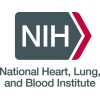
An Expanded Access Study of Oral Liquid Efavirenz in the Treatment of Children With HIV Infection:...
HIV InfectionThis study is being conducted to assess the safety and tolerability of an oral liquid solution of Sustiva for antiretroviral therapy-naive or therapy-experienced HIV-1 infected children between the ages of 3-16 who are failing or intolerant of their current antiretroviral regimen and who are unable to swallow Sustiva capsules.

Analysis of Immune Responses to HIV Vaccines
Acquired Immunodeficiency SyndromeHIV InfectionsThis study will evaluate a test designed to measure immune system responses to HIV and HIV vaccines.

Observing Patients With Early HIV Infection
HIV InfectionsThe purpose of this study is to monitor patients who have recently been infected with HIV in order to learn how their immune systems respond to HIV infection and to study how the virus multiplies in their bodies. Patients who have been infected with HIV recently are considered to have acute, or early, HIV infection. During this period, viral load (level of HIV in the body) rises sharply to a high level at first but then decreases significantly on its own. Doctors are not sure why this decrease in viral load happens and how the body is able to accomplish this. In this study, patients with acute HIV infection will be monitored so that doctors can study their immune systems to try to learn more about this rise and fall in viral load.

AIDS-Associated Heart Disease -- Incidence and Etiology
Heart DiseasesAcquired Immunodeficiency Syndrome2 moreTo detect by Doppler echocardiography the incidence of cardiac abnormalities in HIV-positive patients in a prospective, longitudinal study.

Identifying Emergency Room Patients Who Have Recently Been Infected With HIV
HIV InfectionsThe purpose of this study is to identify patients who have early HIV infection. Patients who have been infected with HIV recently may develop flu-like symptoms within 3 to 8 weeks. Those who go to the hospital emergency room for these symptoms and who may have been exposed to HIV recently will be given a questionnaire and the opportunity to be tested for HIV. Most people develop flu-like symptoms shortly after becoming infected with HIV, and many of these people go to a hospital emergency room for treatment. However, most doctors do not think of testing people with flu-like symptoms for HIV. This study will look at a plan to change this because it is very important to identify patients who have early HIV infection. Viral load (level of HIV in the blood) is very high during early HIV infection, and it is easy to spread HIV to others during this period. Patients who learn they are HIV-positive can stop risky behavior that might spread HIV to other people. Also, patients who find out early that they are HIV positive are able to begin anti-HIV treatment sooner, slowing the disease.

Clinical, Laboratory and Epidemiologic Pilot Studies of Individuals at High Risk for Viral-Associated...
Acquired Immunodeficiency SyndromeKaposi's Sarcoma4 moreThis protocol presents the rationale, 25-year historical review, and methods for multidisciplinary, low-risk studies of individuals referred to the NCI Viral Epidemiology Branch (VEB). Referrals are generally for unusual types of cancer or related conditions, known, or suspected to be related to viruses. Kaposi's sarcoma in two homosexual men evaluated in 1981 is a classic example. These referral cases provide the basis for pilot studies that generate hypotheses, the development of protocols for formal investigations of promising leads, and help to set priorities for VEB. A VEB investigator who is a Staff Member at the NIH Clinical Center, interviews each subject, performs a physical examination, draws a blood sample, and, when appropriate for the disease or virus under study, obtains other clinically indicated biological specimens, such as urine, sputum, saliva, tears, semen, Pap smear, or cervical, anal, oral, or nasal swabs. On occasion, other relatively non-invasive studies may be indicated. Skin testing with conventional, licensed antigens for assessment of cellular immunity may be performed, and skin lesions may be biopsied or excised. Tumor or other tissue biopsies may be obtained when biopsy or surgery is clinically indicated for other reasons. Otherwise no surgery is performed, and no therapy is administered. Clinical referral to other components of NCI, NIH, or the private sector are made as needed. The biological specimens are frozen or otherwise preserved to be batch tested in current assays or future assays that will be developed. Such laboratory testing is performed either at VEB's own support laboratory, or collaboratively in other NCI, NIH, or extramural laboratories that have the needed expertise for the disease or virus under study. Occasionally, repeated or more long-term evaluation is required. More often, a single evaluation in the NIH outpatient clinic, or either at a collaborating physician's office or other suitable site in the field, is sufficient. The VEB investigator provides counseling relevant to the virus or disease under study, and about the interim study results. He or she makes appropriate referral if needed (e.g., to the Genetic Epidemiology Branch for genetic counseling). Clinically relevant results and the VEB investigator's interpretation of these results, are provided in writing to the subject's primary caregiver. Confidentially of the information that is obtained is carefully protected. The results of the study are summarized for publication in the peer review literature.

Safe Generations Plus: Swaziland PMTCT LTF Study
HIV (Human Immunodeficiency Virus)This study is to understand how to improve retention in care and treatment services to HIV positive pregnant women and their babies in Swaziland. The investigators will evaluate outcomes of patients who are lost-to-follow-up (LTF) under a new approach for prevention of mother-to-child (PMTCT) called Option B+, where all HIV positive pregnant women initiate lifelong antiretroviral therapy (ART) regardless of their disease stage. The goal is to understand the outcomes of patients who are LTF from care, and the reasons for disengagement from care in the context of PMTCT in order to inform efforts to improve retention in care among patients under Option B+.

Pediatric Decentralization of ART in South Africa
HIV/AIDSThe decentralization study will describe children taking antiretroviral therapy (ART) at a larger health facility in the Eastern Cape province of South Africa, between the years of 2004-2013. The study will be conducted at Dora Nginza Hospital (DNH). The study will measure how many children stay in care and how many die, as well as their health status. The study will also compare whether children do better if they stay in care a large hospitals or if they get health care at smaller clinics. A second part of the study will find children in the community who have stopped coming for health care and find out what happened to them and what their health status is.

The Prevention Options for Women Evaluation Research (POWER) Cohort
HIV/AIDSThe POWER Cohort study is a PrEP implementation project to demonstrate Pre-exposure prophylaxis (PrEP) delivery for young women in Cape Town and Johannesburg, South Africa and Kisumu, Kenya.

Gonadal Function in Young to Middle Aged HIV-infected Men
Human Immunodeficiency VirusHypogonadism2 moreHIV infection is associated to premature decline of serum testosterone. However, prevalence and biochemical characterization of hypogonadism in HIV-infected men are still to be well defined. HIV-infection is strongly associated to erectile dysfunction in men, but preliminary data suggest that it is poorly associated with serum testosterone in this context.
